
Another important indicator is the number of people working in the industry. These indicators help to describe the direct impact.
But the true magnitude of the steel industry’s impact on society and the economy can’t be measured without taking into consideration the impact it has on its value chain from the perspective of both input suppliers and output customers. This is enormous when we consider how important steel is to so many industries.
The supply chain impact is called ‘indirect impact’. In the case of suppliers, it refers to the impact of the steel industry on the economy due to its purchases of inputs from not only raw materials but also manufactured goods, energy, and services. Downstream, a wide range of steel-using sectors, such as construction, automotive, mechanical machinery, transport, energy, and others depend on steel for their production activities.
The overall impact of the steel industry is $2.9 trillion worth of value-added, and creation of 96 million jobs globally, according to a World Steel Association study.
Meanwhile, the steel industry is taking to optimise resource efficiency and advance sustainable consumption and production.
In 2017, 96.3 percent of all steel industry raw materials were converted into useful materials: 63.6 percent were converted into steel products and 32.7 percent into coproducts.
These co-products are used in the industry itself or in other sectors. For example, slag is used to produce cement, process gases are used in heating, etc. Process gases now have the potential to be converted into fuel for aircrafts or other transport means. These are just a few of the many applications of steel industry co-products, according to another study. Thus the steel industry is moving towards the goal of 100 percent resource efficiency.
Denne historien er fra December 2019-utgaven av Steel Insights.
Start din 7-dagers gratis prøveperiode på Magzter GOLD for å få tilgang til tusenvis av utvalgte premiumhistorier og 9000+ magasiner og aviser.
Allerede abonnent ? Logg på
Denne historien er fra December 2019-utgaven av Steel Insights.
Start din 7-dagers gratis prøveperiode på Magzter GOLD for å få tilgang til tusenvis av utvalgte premiumhistorier og 9000+ magasiner og aviser.
Allerede abonnent? Logg på

Steel's Net Zero mission
The country’s commitment to achieving Net Zero within a targeted timeframe will now propel its steel sector towards a sustainable future in line with global trends.
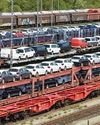
Fuel Price Hike, Supply Chain Disruption Hurt Festive Sales
Supply chain disruptions and fuel price hikes have hurt festive sales in a big way as most auto majors posted decline in sales in October.

Seaborne coking coal offers remain range-bound
Seaborne coking coal offers moved in a narrow range in October amid global supply tightness and healthy spot demand.

Global crude steel output down 8% in September
China manufactured 74 mt in September, fall of 21% y-o-y while India’s production went up by 7% to 10 mt.
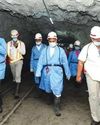
MOIL embarks on expansion projects
“Even though our country is blessed with manganese ore reserves, we import 50% of the domestic requirement. We have to lower our import dependence and save precious foreign exchange.” Ram Chandra Prasad Singh, Steel Minister
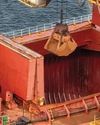
Iron ore handled by major ports down 17% in H1
The 12 major Indian ports handled 27 mt of iron-ore during H1 of 2021, down by 17% from 33 mt recorded for the corresponding period of previous year.
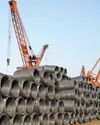
Shrinking China output to boost India exports
“In the third quarter of 2021, the company actively responded to the pressure from external policies, such as production curtailment and dual control system on energy consumption and intensity, as well as coal resource shortage and surging prices.” Baoshan Iron and Steel Co Ltd

Indian Railways' iron-ore handling up 25% in H1
Indian Railways in April-September of 2021 (H1) transported 84 mt of iron ore, up by 25% over 67 mt during April-September 2020.
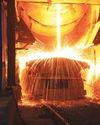
September crude steel production up 7.2% y-o-y
India’s crude steel production in September 2021 grew 7.2 percent to 9.547 million tons (mt) over September 2020 but was down by 3.2 percent from August 2021 output, provisional steel ministry data showed.

“Five enablers: way forward to sustainable cleaner steel”
Right and scalable technology, appropriate policy guidance by government, access to finance to fund transition, willingness of customers to pay for cleaner products and infrastructure for use of new technologies are the need of the hour for the sustainable and cleaner steel industry, according to Madhulika Sharma, Chief Corporate Sustainability, Tata Steel.